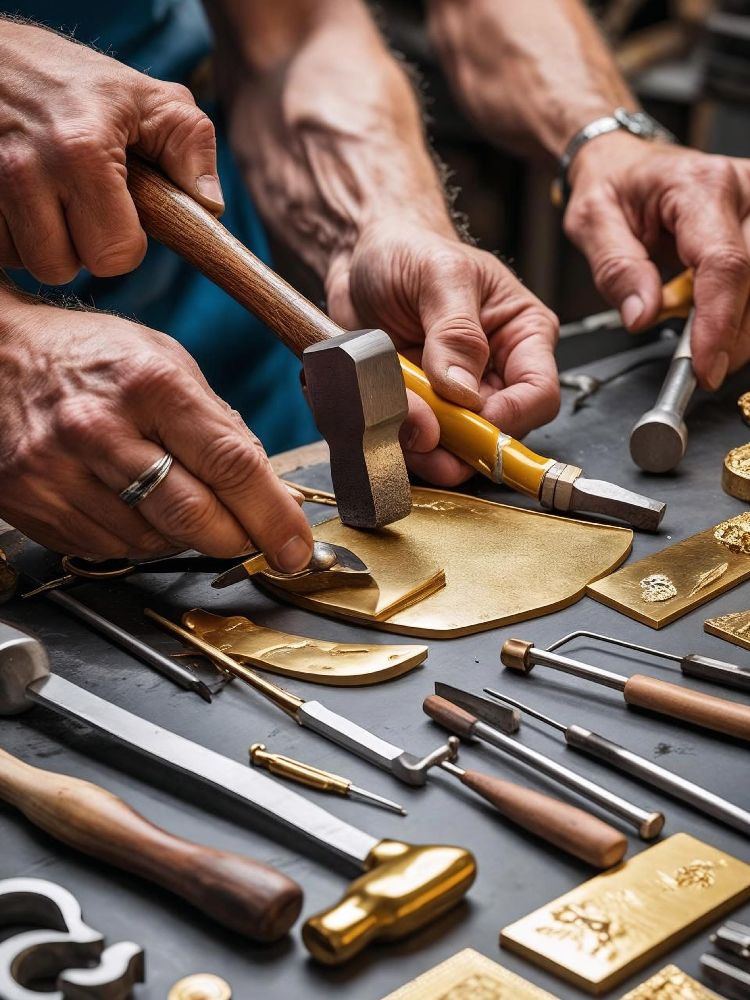Top 5 Metalworking Techniques Every Fabricator Should Know — Gold Edition

In the world of fine jewelry, gold fabrication is both an art and a science. From delicate rings to intricate pendants, every piece begins with a solid understanding of core metalworking techniques. For goldsmiths and jewelry fabricators, mastering these methods is key to crafting pieces that are not only beautiful but built to last.
Here are the top 5 metalworking techniques every goldsmith should master:
1. Sawing and Piercing
Precision cutting is the foundation of handcrafted gold jewelry. Unlike industrial cutting methods, goldsmiths use jeweler's saws with ultra-fine blades to shape intricate patterns and openwork designs.
Tips:
-
Use a wax or soap lubricant for smoother cuts.
-
Maintain consistent blade tension to prevent snapping.
-
Practice controlled hand movements for high accuracy.
Mastering sawing allows for limitless creativity in filigree, custom shapes, and bespoke engravings.
2. Annealing
Gold, like other precious metals, hardens during work. Annealing—a heat treatment process—softens the metal, making it easier to manipulate without cracking.
Essentials:
-
Use a torch to gently heat gold until it reaches a dull red color.
-
Quench in water and pickle in acid to remove oxidation.
-
Repeat annealing between major forming stages.
Without annealing, forming techniques like bending and shaping become risky and inconsistent.
3. Soldering
Soldering is essential for joining components—like ring bands, prongs, and chains—seamlessly. It demands exact temperature control and a deep understanding of metal flow and heat distribution.
Solder types:
-
Easy, medium, and hard solder depending on the project phase.
-
Use flux to prevent oxidation.
-
Invest in precision torches with controllable flame sizes.
Clean, invisible joins are the hallmark of expert gold soldering.
4. Forming and Shaping
This covers techniques like forging, raising, and doming, which allow goldsmiths to transform flat sheets and wires into complex forms.
Tools of the trade:
-
Hammers, mandrels, stakes, and dapping blocks.
-
Rolling mills for controlled thinning and texture.
Forming techniques demand both muscle memory and artistic vision—key to achieving elegant curves and three-dimensional designs.
5. Finishing and Polishing
A beautifully made gold piece deserves an equally flawless finish. Finishing enhances the look, feel, and value of your creation.
Common methods:
-
Hand-polishing with rouge compounds for a mirror shine.
-
Satin or brushed finishes using abrasive pads or wheels.
-
Ultrasonic cleaning to remove polishing residue.
Great finishing transforms good craftsmanship into fine jewelry.
Final Thoughts
Gold fabrication is a timeless craft that balances technical precision with artistic intuition. By mastering sawing, annealing, soldering, forming, and finishing, goldsmiths gain full control over their creative vision—from raw material to finished masterpiece.
Whether you're a seasoned jeweler or an artisan in training, these techniques form the golden core of fine metalworking.


